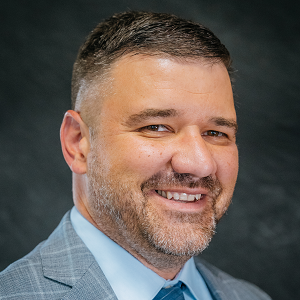Point/Counterpoint: This story is part of Callahan’s new “Point/Counterpoint” series, examining credit union issues from multiple perspectives. Want a different take on incentives? Cooperatives across the country are taking a fresh look at employee motivation, with some dropping individual incentives and moving toward a more holistic approach to compensation. Learn more in “No Bonuses, No Problem: Why Credit Unions Are Rethinking Incentive Models.”
Top-Level Takeaways
- Credit unions tailor incentive programs to drive better performance and member service.
- Incentive programs at Shoreline and Atomic have been instrumental in shaping workplace culture and improving financial outcomes.
- Both credit unions regularly review and adjust their incentive programs to ensure alignment with market conditions and organizational objectives.
Credit unions have long used incentives as a crucial tool for driving performance and enhancing member service. Aligning the right rewards with organizational goals can motivate staff to exceed targets while fostering innovation and maintaining a member-centric focus.

At Shoreline Credit Union ($128.2M, Manitowoc, WI), corporate goals are based on the department, and employees can earn up to 4% of their annual wages by meeting those goals. For example, MSRs might increase their call answer percentages, lenders might boost penetration scores, and accounting staff might improve response times.
“The key for any good leader is learning what motivates their staff,” says Nathan Grossenbach, president and CEO at Shoreline, which has offered corporate goals for four years and direct incentives for 10. “Our incentive programs are designed to achieve success on a select few impactful core strategies. A person who is focused on — and rewarded for — achieving a goal that they can control is a beautiful thing for the employee, the member, and the credit union.”
Shoreline’s direct incentives are geared toward production staff, such as lenders and front-line employees. Those incentives are based on production volume as well as specific product and service promotion. For example, consumer lenders can earn between $500 and $1,500 per month. Mortgage lenders can earn between $500 and $3,000 per month, with some making as much as $5,000 in peak months. Front-line staff incentives range from $50 to $300 per month, Grossenbach says.
What Can You Learn From Like-Minded Leaders? Callahan’s Roundtables connect credit union leaders with peers from across the industry, allowing everyone the opportunity to pose questions, share best practices, and talk openly about challenges and opportunities. Want to hear what other credit unions are tackling incentives? Join us at a Callahan Roundtable. Learn more today.
More than 500 miles to the southeast, Atomic Credit Union ($659.7M, Piketon, OH) takes a different approach. It embraces a direct-incentive-only strategy to create an exciting, competitive atmosphere that drives performance, says Aaron Michael, chief operating officer and general counsel.
Atomic’s incentive structure is based on three components. Its auto recapture program incentivizes tellers and lenders to refinance auto loans from other institutions. Participants earn gift cards based on referrals and closings, with higher loan volumes attracting higher-value cards. In 2024, 90 employees qualified for this incentive, which Michael says underscores its appeal and effectiveness in driving loan growth.

Next, the collector incentive program offers collections staff performance-based bonuses to reduce delinquency rates. Collectors can earn $100 for individual performance and an additional $100 for meeting team goals. Michael, who is nearing his 20th anniversary at Atomic, says the program has significantly reduced turnover and burnout, fostering long-term relationships between staff and members.
Finally, the GAP (Guaranteed Asset Protection) program pays $25 for each policy sold, with top performers receiving substantial annual bonuses. This program not only motivates staff but also promotes a valuable product that helps protect members during financial losses, Michael says.
Atomic’s auto recapture and GAP programs have been in place for more than 10 years, the collections incentive for approximately four, Michael says. The credit union assesses each program every year, with a special eye toward ensuring a holistic approach in the collections process during that program review.
Among Atomic’s 267 employees, Michael says, 58 lenders, 86 tellers, and 10 call center representatives participate in the auto recapture program. Seven staffers in the collections department qualify for that incentive program.
To the northwest, Shoreline includes all staff except executives and upper managers in its corporate goal plan. Production staff are eligible for both the direct and corporate goal plans. This comprehensive coverage ensures the majority of employee performance is aligned with the credit union’s objectives, Grossenbach says.
Financial Impact And Strategic Value
CU QUICK FACTS
Atomic Credit Union
HQ: Piketon, OH
ASSETS: $659.7M
MEMBERS: 75,218
BRANCHES: 17
EMPLOYEES: 225
NET WORTH: 8.7%
ROA: 0.62%
Both Shoreline and Atomic have carefully designed their incentive programs to balance motivation with financial sustainability. Shoreline’s incentives constitute 3-6% of total salaries annually, according to Grossenbach. And, like at Atomic, it reviews its incentive programs annually to ensure they remain aligned with strategic goals and market conditions. Atomic keeps incentives costs to less than 1% of the total payroll, and generally doesn’t exceed that percentage for individual employees.
Both credit unions have observed tangible benefits from their incentive programs. Michael says the collector incentive program has reduced delinquency rates and improved member relationships. This demonstrates the value of targeted incentives in addressing specific organizational challenges by providing clear, attainable goals.
Grossenbach, meanwhile, says incentivizing staff to promote personal teller machines led to a smoother transition and higher member adoption rates when the new technology was installed in that cooperative’s three-branch network.
“The staff had their talking points down — clearer audio and video, faster response times, expansion of transaction capabilities, etc.,” the CEO says. “Preparedness of staff and then that of the members was well worth the $2,500 we paid in incentives.”
Service Culture With A Competitive Twist
Incentive programs also play a sizeable role in shaping workplace culture. Grossenbach — who has been with Shoreline for the past 11 years, seven as CEO — says Shoreline’s corporate goal plan fosters unity and accountability across departments. This also leads to consistent service quality across branches as employees work toward shared objectives and hold one another accountable.
Michael, meanwhile, notes that Atomic Credit Union’s programs create a fun, competitive atmosphere that motivates employees without becoming the primary source of their income. This balance helps maintain a positive work environment while driving performance, he says.
Both credit unions adjust their incentive programs based on experience and changing market conditions. Shoreline, for example, simplified its incentive structure four years ago, removing complex elements like claw backs and multipliers to make the system more transparent and manageable. The changes were well-received and made incentives easier to track and administer, Grossenbach says.
A Test And A Testament
CU QUICK FACTS
Shoreline Credit Union
HQ:Manitowoc, WI
ASSETS: $128.2M
MEMBERS: 7,622
BRANCHES: 3
EMPLOYEES: 37
NET WORTH: 8.2%
ROA: 0.41%
Shoreline managers decided not long ago to test the incentive concept, hiring a production-side employee on flat salary that had the typical incentive for that position baked in, Grossenbach says.
“This person did fine and took care of our members but made minimal effort to go beyond what the member asked for,” the Shoreline CEO says. As a result, the staffer routinely performed below the average for their incented counterparts.
Grossenbach admits there is a fine line between educating members about their options and pushing a hard sale. That shouldn’t be an issue, however, if the employee is presenting responsible, valuable products and services with the member’s best interest in mind.
And, importantly, employees aren’t working on a commission-only basis.
“Incentives are primarily used as an additional opportunity for staff to earn extra money and to create a fun competitive atmosphere among certain promotions,” says Michael at Atomic. “This approach not only benefits employees but also ensures members receive the best possible service, reinforcing the value of incentive programs in the credit union industry.”
4 Tips For Incentives Management
- Keep it simple. “We found more value in keeping it easy to understand for our people,” says Nathan Grossenbach, president and CEO at Shoreline Credit Union.
- Accountability is crucial. “We run into staff that aren’t motivated by money. Still, this is not an excuse to not meet minimums,” Grossenbach says.
- Don’t ignore old money. “We saw an uptick in member satisfaction when we included refinanced/old money into our incentive. Prior, staff would pass on refinances because it didn’t earn them incentive. Existing members, therefore, felt unattended to and often took their business elsewhere,” Grossenbach says.
- Communicate frequently. “The repetition of what is important keeps the team focused and motivated on the correct items,” Grossenbach says.
- Think carefully about dropping incentives, no matter what percentage of a staffer’s income it produces. “Elimination of any program can elicit negative feelings if it is valued by an employee,” says Aaron Michael, COO and general counsel for Atomic Credit Union.